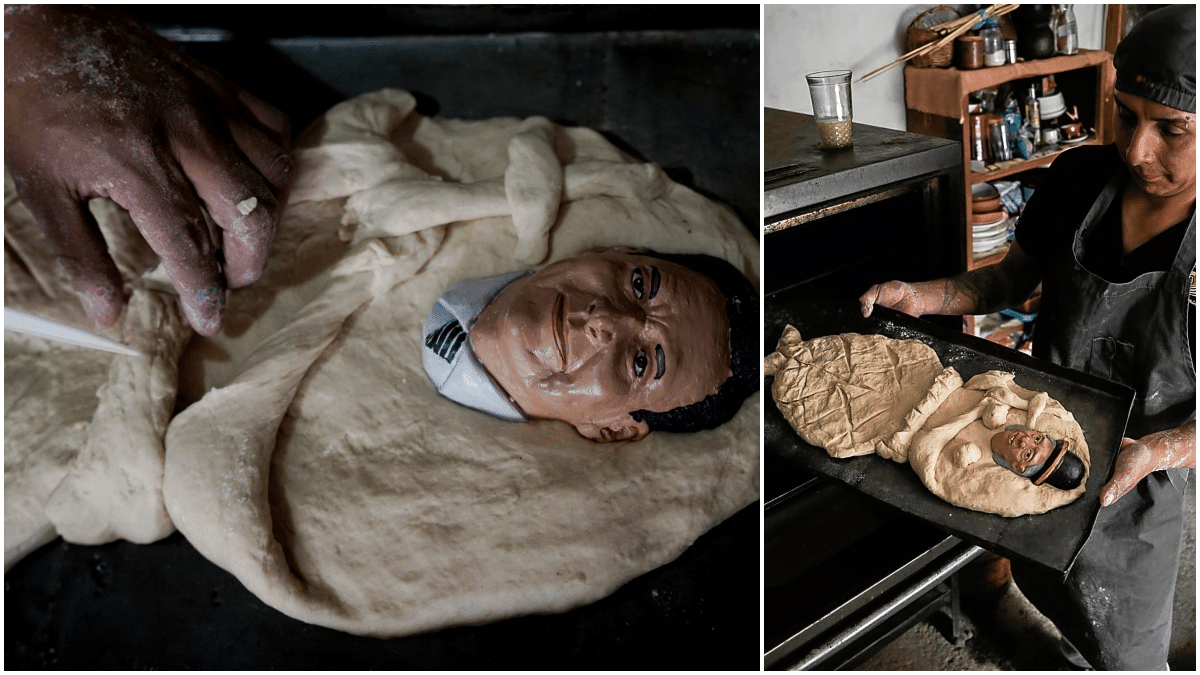kkbet Artist carves faces of the dead onto bread


‘FOOD WAITING FOR SOULS’ Artist William Luna places a plaster mask at a “tantawawa” bread for the Mendoza family (left), as Bolivia celebrates the Day of the Dead on Thursday. He later places in the oven a piece of bread with a mask of his grandmother. —AP PHOTOS
EL ALTO, BOLIVIA — During the “Day of the Dead” celebrations in late October until early November, Latin Americans honor their departed loved ones by setting up altars adorned with food, flowers, and photographs.
But what about carving the actual face of your deceased spouse or family member on a plaster to decorate a piece of bread?
Article continues after this advertisementThat is exactly what one artist in Bolivia is doing.
FEATURED STORIES GLOBALNATION US nuclear bomber joins air drill with South Korea, Japan GLOBALNATION Taiwan detects 37 Chinese aircraft near island GLOBALNATION 13 Chinese nationals nabbed for illegal miningAs part of a centuries-old tradition to honor their dead on Nov. 2, Bolivians share a sweet bread called “tantawawa” (Aymara for “baby bread”) in a symbolic way to connect the living with the dead.
Traditionally, the tantawawa are decorated with generic, plastered faces, but Bolivian artist William Luna thought it would be even more symbolic if he could carve out a feature that resembles the loved ones that people are remembering.
Article continues after this advertisementInspired by the loss of his mother, Luna began sculpting her face onto a tantawawa for the first anniversary of her death in 2017.
Article continues after this advertisementHe then introduced this idea to local markets and now receives requests from families eager to honor their loved ones in this unique way.
Article continues after this advertisement“Families ask for the masks to resemble their deceased loved ones as closely as possible,” Luna said. “I focus on each person’s distinctive features, as we all have something special that sets us apart.”
‘Hungry and thirsty’Luna meticulously crafts each mask, starting with a photo of the departed individual. He then shapes clay using his fingers and modeling tools to capture the person’s likeness. Once satisfied with the clay model, he creates a plastic mold and fills it with plaster. The final step involves painting the mask, sometimes with the help of the family.
Article continues after this advertisementThe entire process takes about a week.
Milton Eyzaguirre, an anthropologist from the National Museum of Ethnography and Folklore in La Paz, said there is not an exact record of the origin of the tantawawa — only that they are pre-Hispanic. Historically, the bread was made with quinoa flour, but now wheat is commonly used.
READ: ‘e-Undas’ allows inmates to connect with loved ones, honor departed kin
“Our tradition holds that souls return hungry and thirsty, and that is why families have food waiting for them,” he said, adding that his idea is to give people a way to see their deceased loved ones again.
Subscribe to our daily newsletter
“Even if it’s only in this waykkbet,” Eyzaguirre said, gazing at some of the plastered faces. —AP
READ NEXT US polls: In Arizona, a county of great consequence Japan grants P12 million aid to Tarlac, Cebu projects EDITORS' PICK US says Iranian-American held in Iran following Israeli attack PCG transports about 9,000 relief boxes for Kristine victims in Bicol US nuclear bomber joins air drill with South Korea, Japan PBA Finals: Momentum now on Ginebra’s side, Chot Reyes admits Over P163,000 worth of shabu, gun seized from 2 suspects in Rizal Taiwan detects 37 Chinese aircraft near island MOST READ Marcos, BARMM leaders discuss collaboration for 2025 elections Marcos declares Nov. 4 ‘Day of National Mourning’ LPA seen outside PAR, chance of becoming a typhoon is low DOJ urged to issue lookout bulletin vs OVP officials Follow @FMangosingINQ on Twitter --> View comments